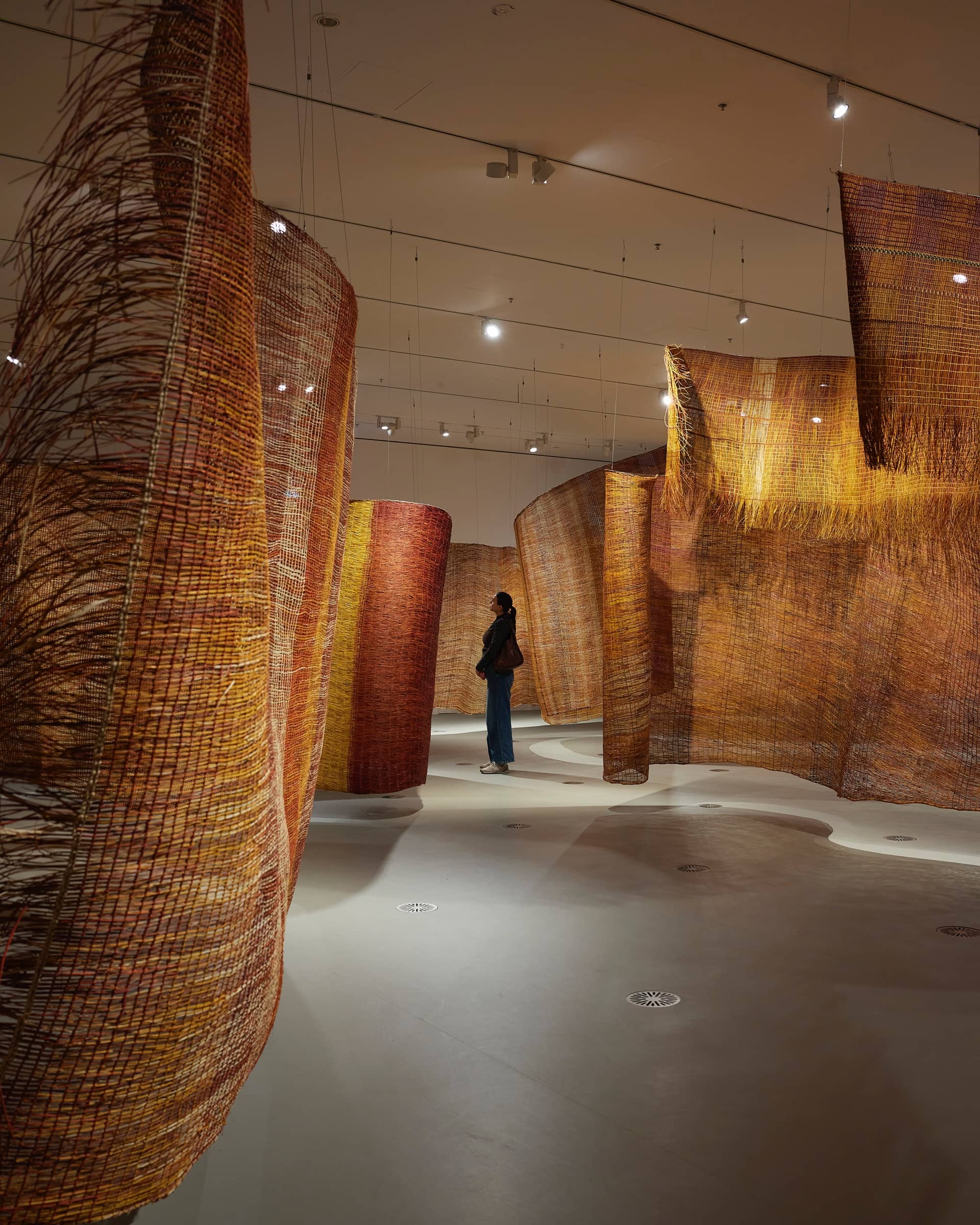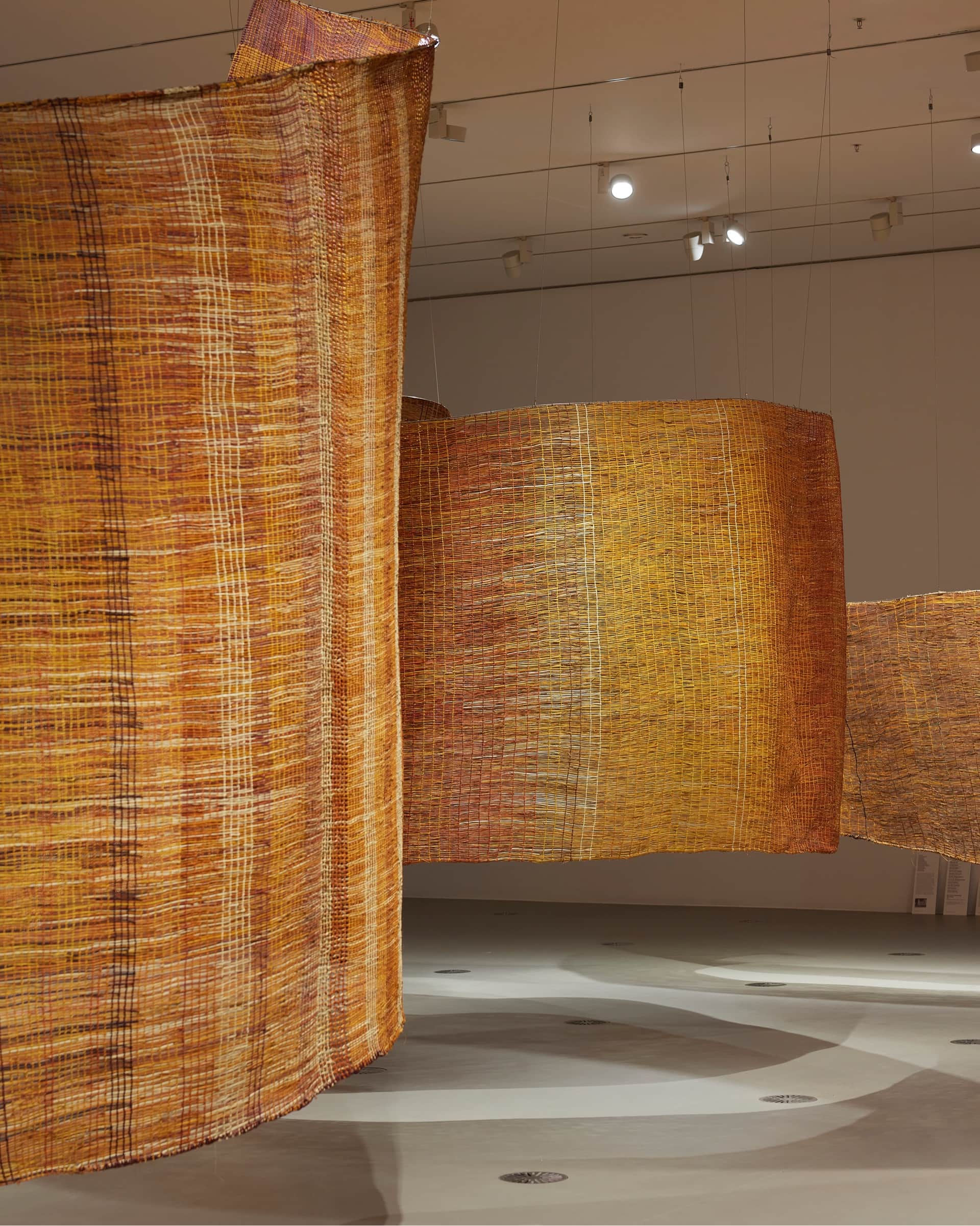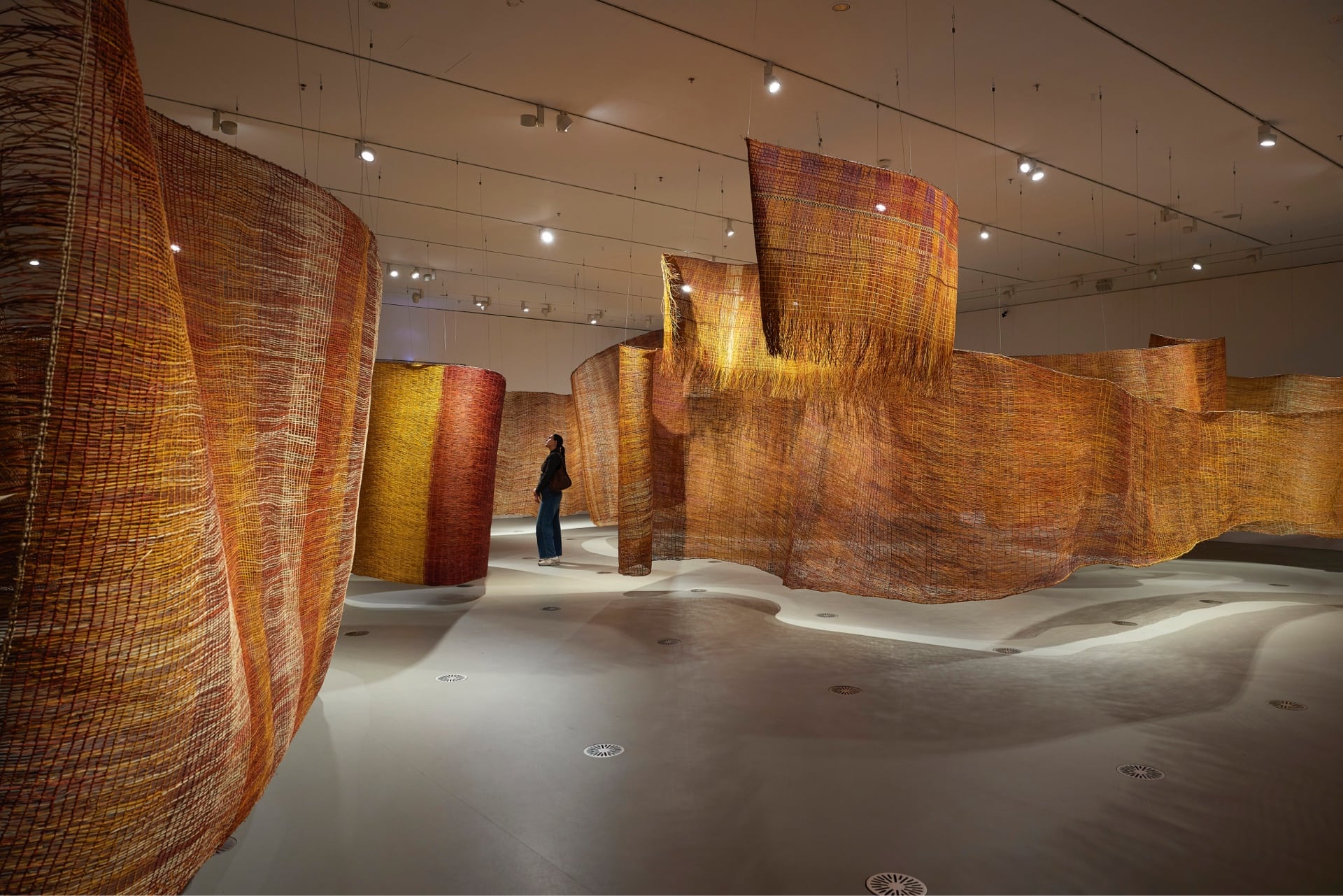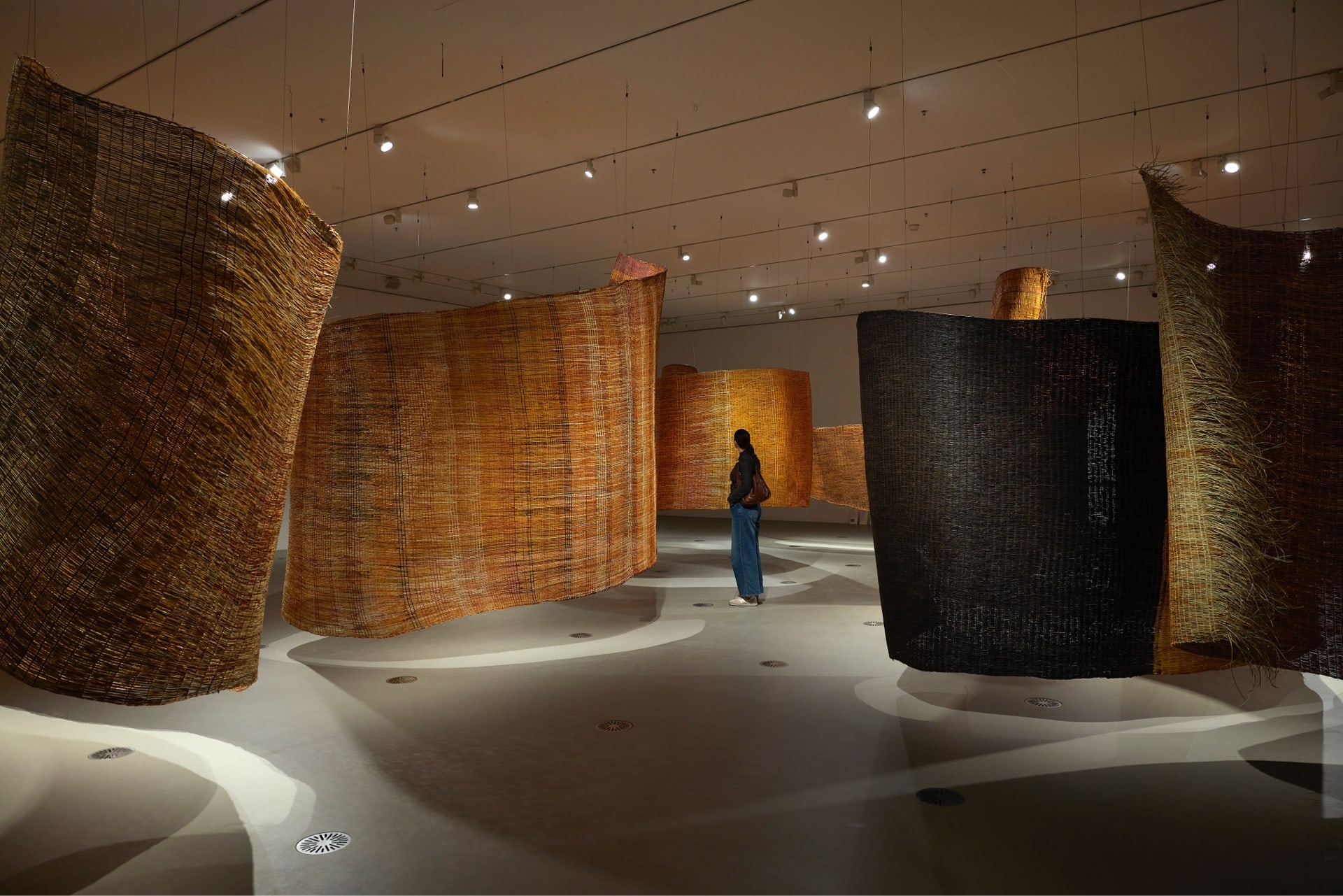Mun-Dirra (Maningrida Fish Fence)
Mun-Dirra (Maningrida Fish Fence)
Freda Ali Burarra-Martay born 1972
Freda Wayartja Ali Burarra-Martay born 1959
Maureen Ali Burarra-Martay born 1978
Cecille Baker Burarra-Martay born 1980
Michelle Baker Burarra born 1971
Bonnie Burarngarra Burarra/Yan-nhaŋu born 1985
Gabriella Garrimara Burarra-Martay born 1984
Doreen Jinggarrabarra Burarra Anbarra born 1961
Lorna Jin-gubarrangunyja Burarra-Martay born 1952
Indra Prudence Burarra-Martay born 1980
Jennifer Prudence Burarra-Martay born 1973
Zoe Prudence Burarra-Martay born 1990
Anthea Stewart Burarra-Martay born 1981
Ground Level
NGV International
View on map
PROJECT
Weaving is one of the oldest human crafts – a timeless, fundamental art form that has defined the way human beings interact with the world around us. The Community of Maningrida in Central-West Arnhem Land has long been home to a rich and vibrant cultural heritage, through bark painting, sculpture and weaving. Mun-dirra is an immense, 100-metre-long, multi-panel woven artwork that symbolises the extraordinary possibilities of the human mind and spirit. The beauty and ambition of this major installation, having taken almost two years to produce, reflects the creativity and collaboration that underpins Burarra art and culture. It is simultaneously a contemporary artwork and a form of cultural continuity representing a relationship to land and water that defines Burarra life. For Burarra women, weaving is not just a means of creating functional objects, it is also a way for individuals to express their identity and cultural heritage.
The experience of spending time inside this installation is symbolic of the complexity and interconnectedness of the human soul. The patterns created by the intertwining and overlapping of the pandanus walls offer a metaphor that represents the threads of our thoughts, experiences and emotions. Each line is suggestive of a different aspect of our inner selves, and the act of weaving a metaphor for the way in which these elements come together to form a complete and cohesive whole. Humanity.
ABOUT
The Community of Maningrida in Central-West Arnhem Land has long been home to a rich and vibrant cultural heritage, with a particular strength in the tradition of weaving. For generations, Burarra people have been creating beautiful and intricate an-guchechiya (fish trap), burlurpurr (bathi or dilly bags) and bamagora (conical mat/women’s skirt used for ceremony), as well as many other woven items. Burarra women from Maningrida use natural materials such as gun-menama (pandanus leaves), burdaga (kurrajong) and various bark fibres to produce their work. In 2021 the NGV through the Lisa Fox Commissions Series commissioned the largest woven sculpture ever produced in Australia, Mun-dirra, 2023.
Commissioned by the National Gallery of Victoria, Melbourne. Purchased with funds donated by Lisa Fox, 2023
This project has been supported by the Elizabeth Summons Grant in Memory of Nicholas Draffin




